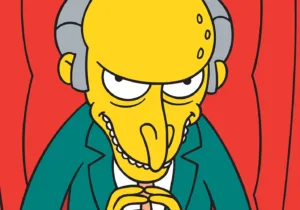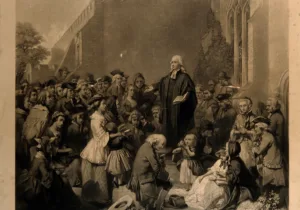Another year, another book by Thomas Sowell. It is astonishing that Sowell, 93 years young, scarcely appears to be slowing down. No public intellectual of his generation has been this prolific for this long, save perhaps Henry Kissinger. He’s a veritable national treasure.
Social Justice Fallacies is classic Sowell. There are no graphs or tables, nor even any cover art. The one and only attraction of the book is Sowell’s air-tight reasoning. It alone justifies the price tag.
Within its pages is his salvo in our culture war du jour. At a time when activists, scholars, and politicians trot out slogans like “diversity, equity, and inclusion” and “systemic bias,” Sowell has a biting retort. He argues that the social justice agenda they champion is mistaken. It is based on flawed premises and conclusions, inevitably leading to social policies that harm the people they’re supposed to help.
“You’re entitled to your own opinion,” reads the book’s epigraph, a quote from the late Daniel Patrick Moynihan, “but you’re not entitled to your own facts.” That’s one way to describe the essence of Sowell’s writing. He does not assert anything without evidence in its defense. If only peddlers of social justice pieties could do the same. To rebut Sowell’s arguments, they will need many facts: facts that do not seem to be in abundance, to put it mildly.
Take their view that there would be equal outcomes in a world of equal chances, which is the subject of the book’s first chapter. “At the heart of the social justice vision is the assumption that, because economic and other disparities among human beings greatly exceed any differences in their innate capacities, these disparities are evidence or proof of the effects of such human vices as exploitation and discrimination,” Sowell writes (2).
Do human vices explain why NHL players from Canada outnumber those from the United States, despite the fact that Canada has under 1/8th the population of the United States? Why Germans have for centuries been world leaders in beer production? Why Asian Americans have more PhDs in engineering than blacks and Hispanics combined? Why first-born and only children are more likely than other children to reach the highest rungs of the professional ladder as adults? Sowell shows that much else besides exploitation and discrimination accounts for inequality of outcome.
Advocates of social justice deploy flashy terms to justify their agenda, but not hard evidence. “We can read reams of social justice literature without encountering a single example of the proportional representation of different groups in endeavors open to competition— in any country in the world today, or at any time over thousands of years of recorded history,” observes Sowell (2–3). He, however, deploys many past and present examples of the reverse from places as varied as Italy, Malaysia, and South Africa. As shown by his 57 pages of endnotes—more than a quarter of the whole book—Sowell has taken pains to study the facts.
The implicit antagonists in Social Justice Fallacies are “the Anointed,” whom Sowell has taken on elsewhere, notably in The Vision of the Anointed (1995). They are the academic, political, and media elites he holds responsible for the social justice-oriented policies that have torn America apart. Affirmative action and minimum wage laws, to name a few, have made ordinary people worse off because the Anointed believe that they have no idea what’s good for them. They are chess pieces, in Sowell’s words, whose moves are plotted by their moral and economic superiors. But, as he puts it, “people are not just inert chess pieces, carrying out someone else’s grand design” (62). They are sovereign beings who make many self-interested choices every day. Why do some in the ruling class think they know better?
Their superciliousness really bugs Sowell. He documents persuasively that advocates of social justice disregard any evidence inconsistent with their vision and agenda. Consider one of many edifying facts presented by Sowell: that Japanese Americans have a median age of 52 and Mexican Americans a median age of 28. Why would we expect groups with such unequal median ages to have equal socio-economic indicators? It’s a straightforward question that naturally arises from the evidence. But odds are that social justice proponents haven’t thought it through and will never be asked to. Deaf to anything that might challenge their beliefs, they take solace in their self-righteousness.
Sowell ends the book with one remark about their telling lack of interest in cases where poor people have lifted themselves out of poverty. “That at least raises the question whether the social justice advocates’ priorities are the poor themselves or the social justice advocates’ own vision of the world and their own role in that vision,” he concludes (130).
At times, Sowell is restrained in his criticism of the misbegotten social policies their vision has precipitated. For instance, he disproves the left-wing article of faith that tax cuts depress tax revenues, pointing out that tax revenues grew, including those from high earners, after tax cuts under President Calvin Coolidge and his Secretary of the Treasury Andrew Mellon. Here Sowell might really take it to the income redistributionists. This is an opportunity to assail efforts by the Biden administration and other Democrats to raise taxes and have the rich “pay their fair share?” Sowell could buttress his cogent insights with discrete policy prescriptions.
To be sure, Sowell makes it clear that the state should reject the social justice vision and its agenda. The natural end point, he states, is “having government empower surrogate decision-makers to rescue victims of various forms of mistreatment by taking many decisions out of other people’s hands” (82). Our ever-growing administrative state is full of people convinced that others cannot be trusted to do what is best for themselves.
We’re left with policies putting the lie to the world envisioned by social justice advocates. Sowell points out “the painful reality . . . that no human being has either the vast range of consequential knowledge, or the overwhelming power, required to make the social justice ideal become a reality” (127). The mounds of evidence Sowell cites in his characteristically pithy style show as much.
If social justice proponents cared about the evidence, then they would welcome Social Justice Fallacies. Yet social justice seminars across the country will not assign Thomas Sowell alongside John Rawls, Ibram Kendi, and Robin DiAngelo. Sowell’s ideas challenge their revolutionary creed and thus must be ignored.
The good news is there’s a way to get them from alternative sources. The internet specifically has grown Sowell’s reach. His interviews have amassed millions of views on YouTube, while the anonymous owner of the Thomas Sowell Quotes Twitter account shares with his 1.1 million followers direct quotes from Sowell’s books.
Many are young people who have heard nothing but the tired narratives of victimhood and oppression that dominate American education. They clamor for facts and well-reasoned arguments. Social Justice Fallacies has plenty of both and is yet another of Sowell’s correctives to the received wisdom among elites.







 Sponsor a student for Christianity & National Security 2024
Sponsor a student for Christianity & National Security 2024